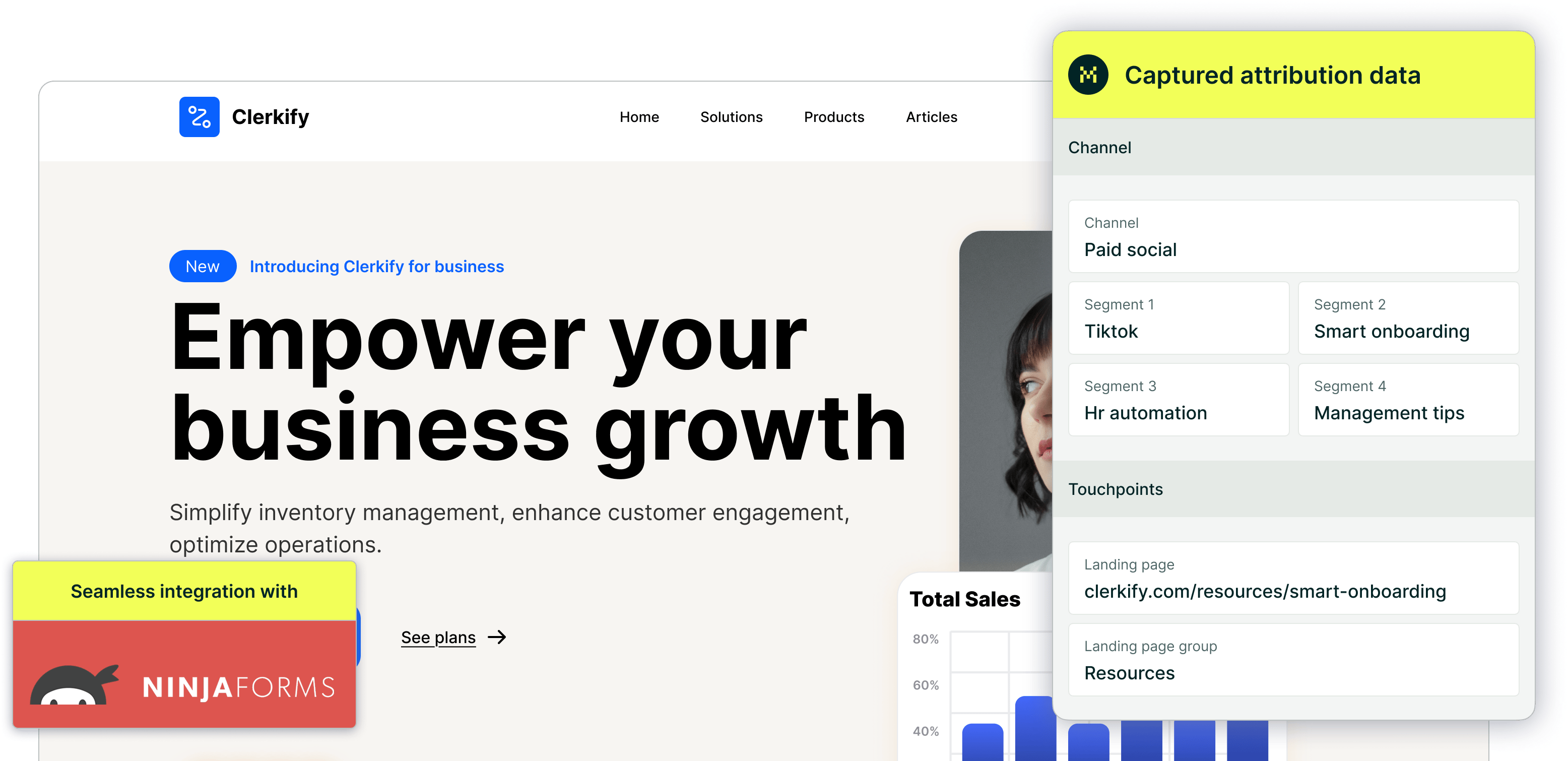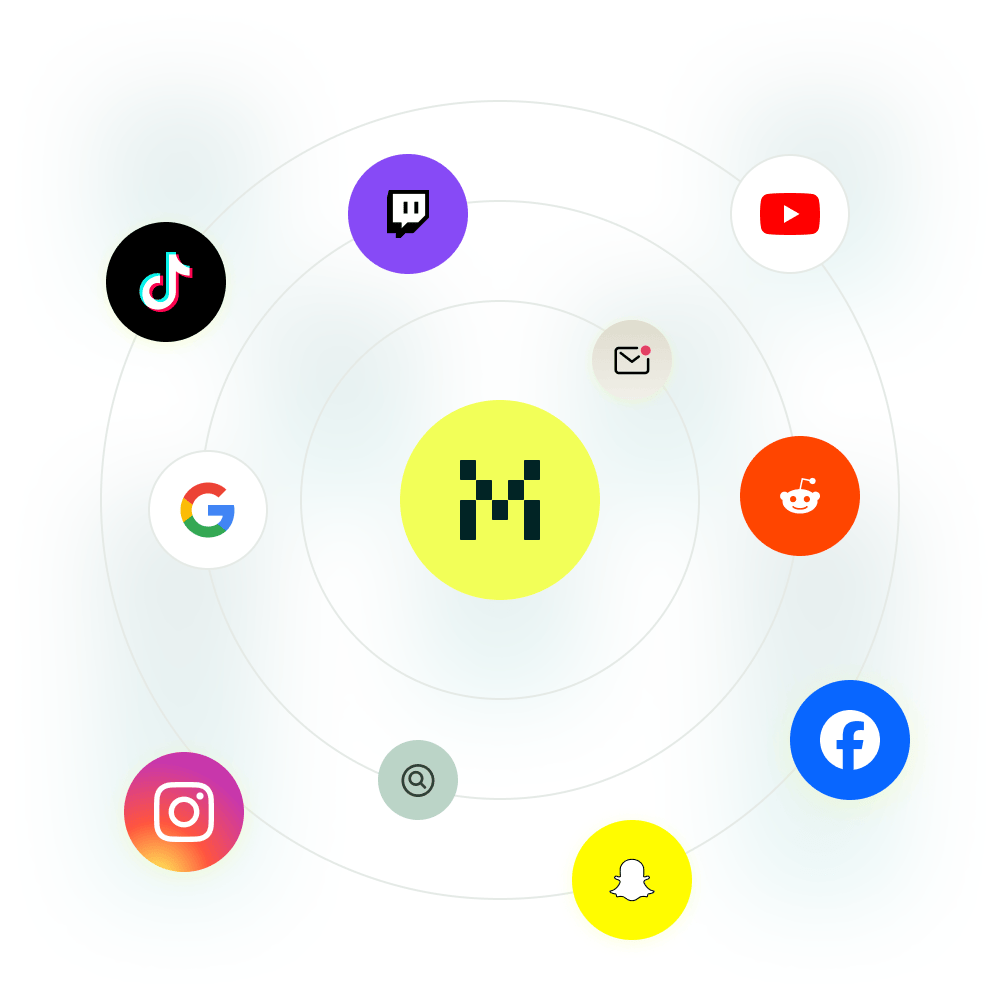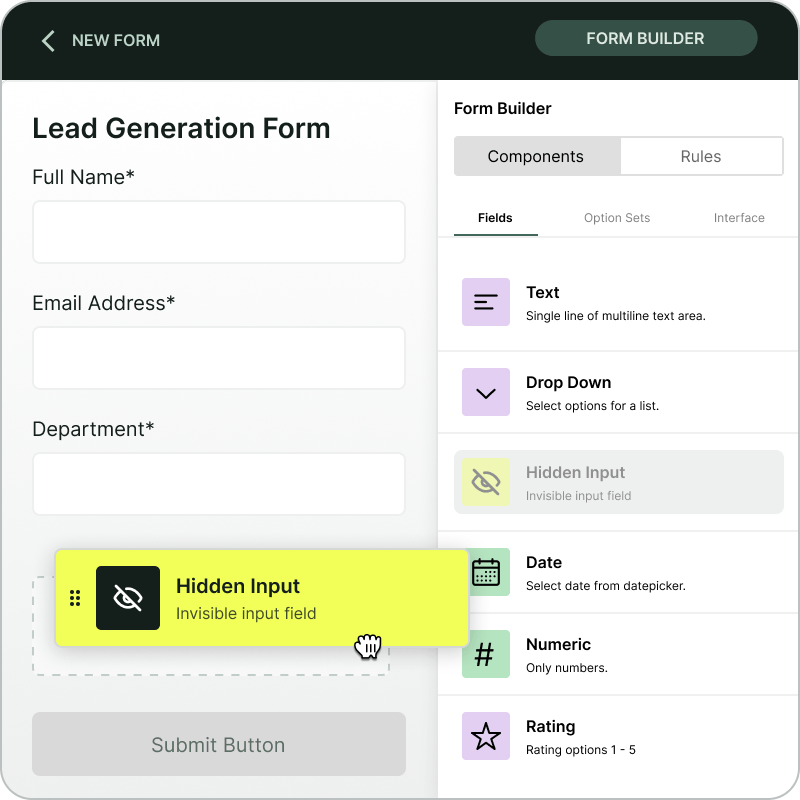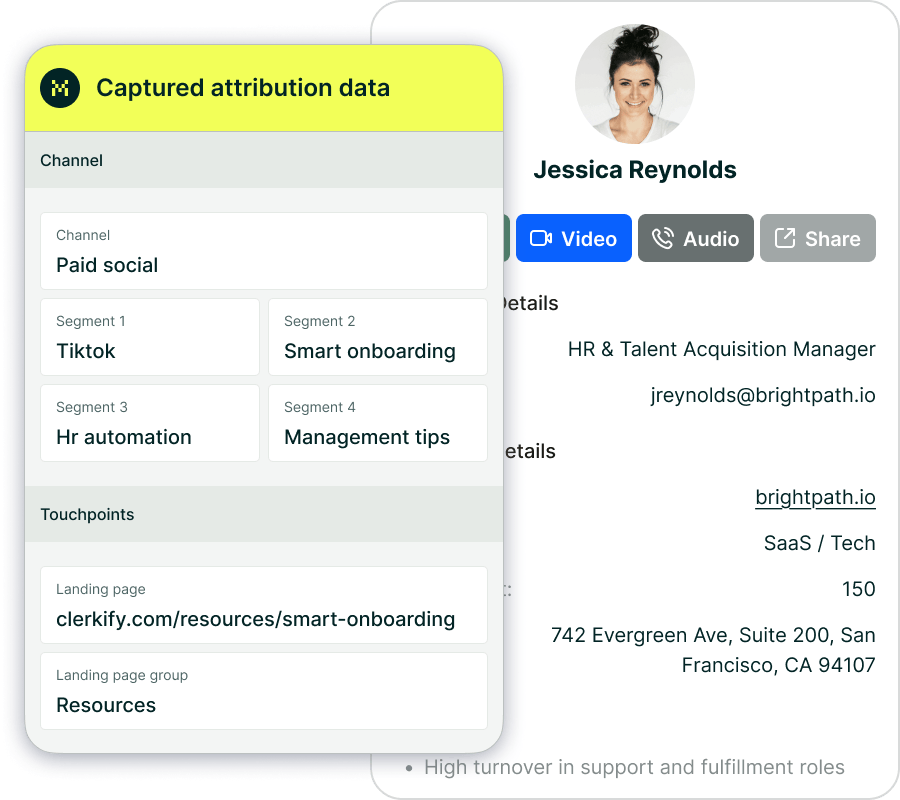UTM parameters best practices


Madlitics is a leading analytics platform, providing you with the insights you need to understand your website traffic by capturing and organizing marketing attribution data. UTM parameters are simple tags added to URLs that help you track your online campaigns, showing you exactly where your traffic comes from and how well your marketing efforts perform.
Whether you're with an agency, running a small business, or managing your own marketing, UTM parameters are essential for measuring success. Madlitics makes it easy to integrate these parameters into your workflows, connecting your marketing tools, CRM, and analytics platforms for a complete view of your marketing performance.
Discover how we develop visitor categorization and channel strategies in Visitor channel categorization, and learn how to capture and structure attribution data for meaningful insights in Capturing and structuring attribution data.
Whether you're new to UTM tracking or open to change, we recommend a structure that fits seamlessly with Madlitics, enhancing data accuracy and simplifying campaign management, so you can effectively measure and optimize your marketing efforts.
UTM parameters are essential tools in digital marketing, enabling you to track and analyze the effectiveness of your campaigns by adding specific tags to your URLs. Here's how you can use each parameter to gain meaningful insights into your marketing efforts:
UTM_Medium [channel] :
Categorizes incoming traffic into major channels, helping you understand which broad strategies are most effective, such as paid social, email campaigns, display ads, etc.
• Values: utm_medium=paidsocial, utm_medium=paidsearch, utm_medium=email, utm_medium=display
• Application: Use utm_medium=paidsocial for campaigns on platforms like Facebook and Instagram. Choose utm_medium=paidsearch for ads running on search engines such as Google Ads, Bing, etc. Opt for utm_medium=email for email marketing efforts. For banner and display ad campaigns, utm_medium=display is appropriate.
UTM_Source [segment1] :Pinpoints the specific platform or website where your traffic originates, enabling you to identify the most effective sources.
Values: utm_source=google, utm_source=instagram, utm_source=newsletter
Application: Provides insights into optimizing presence on specific platforms by identifying high-performing sources.
UTM_Campaign [segment2] :Compares the performance of various campaigns within each source and medium, guiding strategic planning based on effectiveness.
Values: utm_campaign=summer_sale_2024, utm_campaign=holiday_promo
Application: Facilitates strategic decision-making by highlighting which campaigns yield the best results.
UTM_Term [segment3] :Used in paid search campaigns to identify effective keywords, aiding in optimizing ad spend.
Values: utm_term=beach_umbrellas, utm_term=organic_sunscreen
Application: Refines keyword strategy by tracking the most valuable search terms.
UTM_Content [segment4] :Differentiates similar content or links within the same ad to test performance, useful for A/B testing.
Values: utm_content=ad_version_a, utm_content=30_percent_off_ad
Application: Helps identify winning ad creatives, optimizing your creative strategy.
Madlitics tracks not only how visitors arrive at your site but also what content attracted them. These fields help you understand which types of content are driving leads and customers, and allow you to dig deeper into individual page performance.
Need help building consistent UTM parameters for campaign URLs?
Use the Madlitics Campaign URL Builder to quickly generate trackable links for your marketing efforts.
The following examples illustrate how marketers can use UTM parameters to track various campaigns across different channels. By setting specific parameters, you can clearly identify the source, medium, campaign name, targeted keywords or audience, and the specific content that drove traffic to your website.
Google Ads
High intent and effective for capturing immediate traffic. Ideal for capturing high-intent traffic, Google Ads allows you to reach users at the exact moment they're actively searching for products or services you offer, which increases the likelihood of conversion.
Parameters
utm_medium=paidsearchutm_source=googleutm_campaign=[campaign name]utm_term=[ad group]utm_content=[ad name]Example url
?utm_source=google&utm_medium=paidsearch&utm_campaign=february_promo&utm_term=discount_offer&utm_content=ad_version_a
Captured Data
Channel: Paid searchSegment1: googleSegment2: february_promoSegment3: discount_offerSegment4: ad_version_a
Email Marketing
Highly personalized and cost-effective with great ROI. Best for nurturing leads, customer retention, and direct sales, email marketing is highly personalized, cost-effective, and allows for segmentation and automation.
Parameters
utm_medium=emailutm_source=[email origin]utm_campaign=[campaign name]utm_campaign=[offer description]utm_content=[clicked link]Example url
?utm_medium=email&utm_source=hubspot&utm_campaign=lead_nurturing&utm_term=free_demo&utm_content=hero_image_cta
Captured Data
Channel: Email marketingSegment1: hubspotSegment2: lead_nurturingSegment3: free_demoSegment4: thought_leadership_postNote: The utm_source parameter for email marketing identifies the email's origin. You can specify your email platform (e.g., mailchimp), an internal identifier for emails you send (e.g., company_newsletter), or the source of external emails (e.g., partner_name). Choose the option that best describes the email's origin and provides the most useful tracking data.
Organic Search
Essential for long-term visibility and traffic without paid spend. Best for attracting visitors through unpaid search results, organic search strategies focus on improving visibility in search engines like Google and Bing.
Parameters
utm_medium=organicsearchutm_source=[search engine]utm_campaign=[campaign name]utm_term=[keyword] *utm_content=[content description] *Example url
?utm_source=google&utm_medium=organicsearch&utm_campaign=blog_launch&utm_term=social_media_strategies&utm_content=blog_post
Captured Data
Channel: Organic searchSegment1: googleSegment2: blog_launchSegment3: social_media_strategies *Segment4: blog_post *Note: While utm_term and utm_content are included here for reference, they may not always be necessary for organic search tracking, as the primary focus is often on the source and campaign.
Facebook Ads
Popular for reaching a broad audience and engaging with customers. Ideal for targeting based on interests, behaviors, and demographics, Facebook Ads are great for building brand awareness and reaching people who might not be actively searching for your product but fit your target audience profile.
Parameters
utm_medium=paidsocialutm_source=facebookutm_campaign=[campaign name]utm_term=[ad group]utm_content=[ad name]Example url
?utm_source=facebook&utm_medium=paidsocial&utm_campaign=crm_retarg&utm_term=lead_nurturing&utm_content=carousel_ad
Captured Data
Channel: Paid SocialSegment1: facebookSegment2: crm_retargetingSegment3: lead_nurturingSegment4: carousel_ad
TikTok, Instagram, Twitter Ads
Effective for visually appealing content and targeting younger demographics. Best for visual products and younger audiences, these platforms offer high engagement rates, especially for visually appealing content.
Parameters
utm_medium=paidsocialutm_source=[platform name]utm_campaign=[campaign name]utm_term=[ad group]utm_content=[ad name]Example url
?utm_source=tiktok&utm_medium=paidsocial&utm_campaign=crm_demo&utm_term=small_business_owners&utm_content=video_ad_1
Captured Data
Channel: Paid socialSegment1: tiktokSegment2: crm_demoSegment3: small_business_ownersSegment4: video_ad_1Note: UTM_Term is less common here, as TikTok is not search-based. You can rely on utm_content to differentiate between different types of ads, such as video variations or influencer partnerships.
Linkedin Ads
Valuable for B2B marketing and reaching professionals. Ideal for B2B marketing and professional services, LinkedIn Ads target professionals based on job titles, industries, and company size.
Parameters
utm_medium=paidsocialutm_source=linkedinutm_campaign=[campaign name]utm_term=[ad group]utm_content=[ad name]Example url
?utm_source=facebook&utm_medium=paidsocial&utm_campaign=crm_retarg&utm_term=lead_nurturing&utm_content=carousel_ad
Captured Data
Channel: Paid socialSegment1: linkedinSegment2: crm_launchSegment3: business_ownersSegment4: sponsored_post
Referral Marketing
Valuable for leveraging existing relationships but less direct than paid ads. Best for leveraging external websites to drive traffic, referral marketing helps you gain visitors from links on other platforms.
Parameters
utm_medium=referralutm_source=[referrer website]utm_campaign=[campaign name]utm_campaign=[keyword or offer] *utm_content=[referral link description] *Example url
?utm_source=partnerwebsite&utm_medium=referral&utm_campaign=crm_launch&utm_term=partnership&utm_content=homepage_link
Captured Data
Channel: ReferralSegment1: partnerwebsiteSegment2: crm_launchSegment3: partnership *Segment4: homepage_link *Note: Including utm_term and utm_content as optional in this contexts allowing for flexibility while still acknowledging that it's not the primary focus for most campaigns.
Affiliate Marketing Useful but can vary significantly in effectiveness based on partnerships. Best for expanding reach through partnerships, affiliate marketing allows you to leverage other websites or individuals to promote your products or services.
Parameters
utm_medium=affiliateutm_source=[affiliate name]utm_campaign=[campaign name]utm_campaign=[keyword or offer] *utm_content=[ad name]Example url
?utm_source=affiliate_partner&utm_medium=affiliate&utm_campaign=summer_sale&utm_term=special_offer&utm_content=banner_ad_1
Captured Data
Channel: AffiliateSegment1: affiliate_partnerSegment2: summer_saleSegment3: special_offer *Segment4: banner_ad_1Note: utm_term is not typically used because the primary tracking focuses on the affiliate's source rather than specific keywords.
Organic Social
Important for brand building, but results can be slower and less measurable. Best for building brand personality, engaging with customers, and fostering community, organic social strategies are free to use and help build authentic connections while driving potential viral growth.
Parameters
utm_medium=organicsocialutm_source=[platform name]utm_campaign=[campaign name]utm_term=[target audience or topic] *utm_content=[post description] *Example url
?utm_source=instagram&utm_medium=organicsocial&utm_campaign=customer_engagement&utm_term=brand_&utm_content=community
Captured Data
Channel: Organic socialSegment1: instagramSegment2: customer_engagementSegment3: brand_awareness *Segment4: community_post *Note: The utm_term and utm_content parameters are included here for reference, but their use may vary based on the specific goals of your organic social campaigns.
Display Advertising
Useful for brand awareness but often has lower engagement compared to other channels. Best for visually impactful marketing, display advertising allows you to reach audiences through banner ads across various websites.
Parameters
utm_medium=displayutm_source=[ad network]utm_campaign=[campaign name]utm_campaign=[keyword or offer] *utm_content=[ad variation]Example url
?utm_source=google_display&utm_medium=display&utm_campaign=holiday_sale&utm_term=spring_collection&utm_content=banner_ad
Captured Data
Channel: DisplaySegment1: google_displaySegment2: holiday_saleSegment3: spring_collection *Segment4: banner_adNote: Including utm_term as optional in this contexts allowing for flexibility while still acknowledging that it's not the primary focus for most campaigns.
Utilizing UTM parameters effectively allows marketers to gain valuable insights into their campaigns across various channels. By clearly defining the source, medium, campaign, and content, businesses can track performance, optimize strategies, and make informed decisions that drive growth. Whether using paid advertising or organic methods, the right UTM setup ensures that every interaction is measurable and actionable, paving the way for data-driven success.

https://yoursite.com/?utm_source=linkedin&utm_medium=paidsocial&utm_campaign=q1_promo




